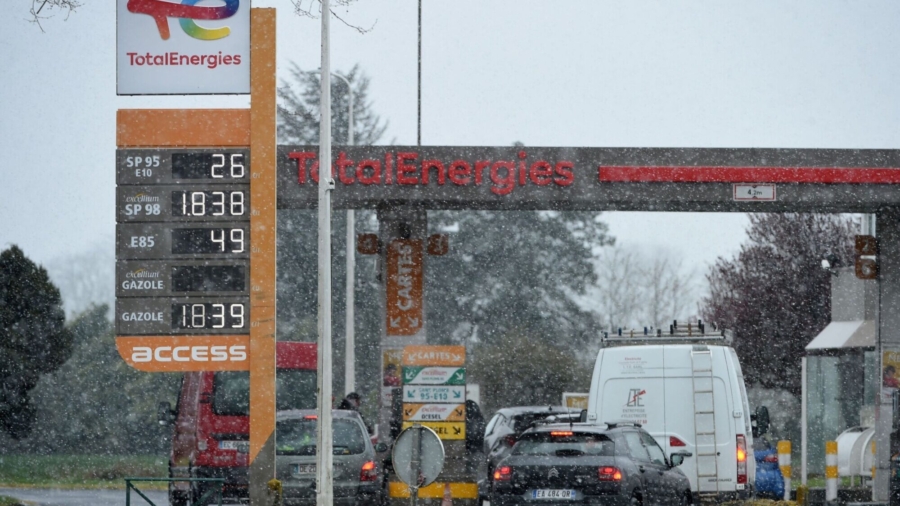The annual rate of currency inflation in the Eurozone hit a new high of 7.5 percent last month, significantly accelerating the rate of inflation and surpassing economists’ predictions, as the consequences of Russia’s invasion of Ukraine have caused prices to surge throughout Europe.
On Friday, Eurostat released its inflation statistics (pdf) for the month of March, indicating that prices throughout the 19 countries constituting the Eurozone grew by a new record of 7.5 percent in the past year, significantly higher than February’s rate of 5.9 percent. March’s results surpassed the European Central Bank’s projections, which predicted an annual inflation rate of 6.6 percent.
Inflation was especially acute in the Baltic countries and the Netherlands, all of which saw double digit inflation during this period, with Lithuania suffering the highest inflation rate at 15.6 percent. Inflation was lowest in the Republic of Malta, which saw a 4.6 percent monthly rise in prices—still more than twice the 2 percent rate said by the European Central Bank to guarantee price stability.
As in the United States, inflation was led by drastically higher energy costs, which rose by 44.7 percent in the Eurozone throughout the last month. This precipitous rise is largely attributable to Russia’s ongoing invasion of Ukraine and the subsequent sanctions which have been levied against the former, causing a scarcity of fuel in the region: The European Union imports over 40 percent of its gas from Russia, and while gas is so far exempt from most sanctions, the war has nonetheless occasioned significant price volatility.
This trend may continue to get worse, as Putin has demanded that all payments for Russian gas exports be made in rubles. German energy minister Robert Habeck has stated that the G-7 nations were in consensus that no such payments in the Russian currency would be acceptable, and the consequences of this ultimatum could exacerbate fuel price inflation even further in upcoming months.
Core inflation, which removes fuel and food costs to medium-term price trends in less volatile markets, was measured at 3.2 percent, up from 2.8 percent in February.
The European Central Bank will face a delicate balance as it attempts to stymie inflation. Unlike in the United States, where high inflation rates are paired with relatively low unemployment, unemployment throughout the EU has remained high throughout the period of the CCP (Chinese Communist Party) virus pandemic. If European bankers should need to hike rates to slow inflation, they will likely do so only grudgingly and risking damage to the region’s economy.
From The Epoch Times

